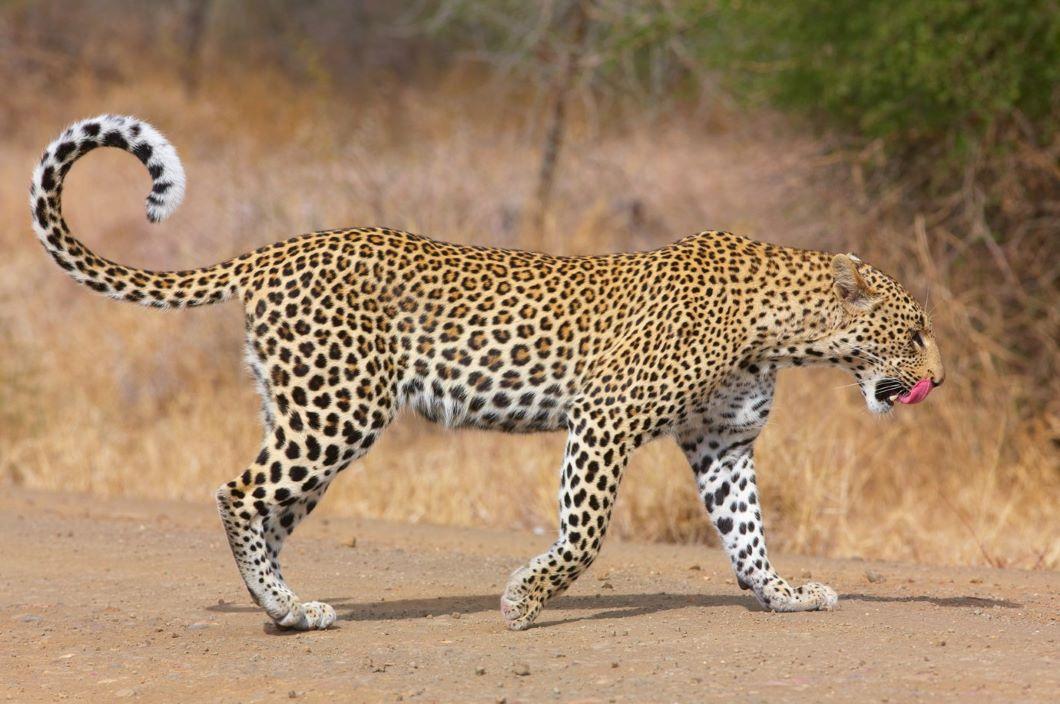For centuries, leopards have been regarded by many as something special, something truly extraordinary. And no, I do not mean only in hunting circles either. Whether it is their shy, elusive natures, the way they seem to look through a person when they stare into your eyes, or perhaps the way that they silently appear and disappear, they truly are mystical African creatures worthy of much reverence and respect.
Whatever it is, leopards hold a very special place within many African cultures. Narratives and legends abound, with stories about leopards passed down from generation to generation, fueling its popularity with talks and tales of this extraordinary African cat.
[DYNAMIC-BLOGTABLEOFCONTENT]
Key Takeaways
- Leopards hold a special place in many African cultures.
- Legends, tales, and narratives of leopards are passed down from generation to generation, confirming the bond and importance that leopards place in society.
- Leopards are seen as sacred in many African cultures and there are many legends involving this mystical animal.
- Leopard skins, teeth, claws, etc are often used in traditional African ceremonies, with chiefs or important persons wearing their skins to reiterate their power.
- Leopards have many threats to their ongoing survival, including human-wildlife conflict, lack of prey or limited prey, poaching, and climate changes.
- The strict regulations concerning leopard hunting in Africa, as well as ethical hunting practices, ensure the survival of this majestic animal.
- Leopard hunting in Africa remains popular due to the challenge of hunting this elusive and cunning African cat.
- As a member of the Big 5 and Dangerous 7, the leopard remains a sought-after hunting trophy.
- There are three main methods of hunting leopards, namely bait and blind, stalking, as well as hunting with hounds.
Leopards in African Folklore
In ancient African folklore, these majestic African cats were seen as symbols of power. African myths and legends portray the leopard as possessing and embodying strength, protection, and spirituality.
I think the most famous African folktale would be the one of “How the Leopard Got His Spots” which begins by relaying a story about a leopard without markings. It starts by saying he was sandy or light-colored, like a lion, without any markings whatsoever. He was then hunted by a famous hunter who had the leopard in his sights and the leopard was desperate to escape.
To avoid becoming prey, the leopard was told to eat the roots of a magical plant, and the poisoned arrows and weapons would then not affect or kill him. The tale then continues with how the leopard ate the plant for this magic to become a reality. And it did! Although the arrows did touch him, they didn’t injure or kill him, but rather left dark, round marks on his fur where they had touched him.
After that, these markings helped him to camouflage himself amongst the trees and the plants, making the leopard notoriously difficult to see and therefore it became a challenge to successfully target this predator during a leopard hunting expedition. And that is the story of how the leopard got his spots.
There are various stories or versions of this legend, with diverse tribes and territories weaving different tales about the leopard and its intricate and unique coat markings. But one thing that they all have in common is that they speak of leopards with awe, respect, and a fondness that doesn’t go unnoticed.
No matter how you believe that the leopards got their spots, this dangerous African cat continues to inspire awe and wonder across cultures, with an air of mystery, strength, and secrecy.
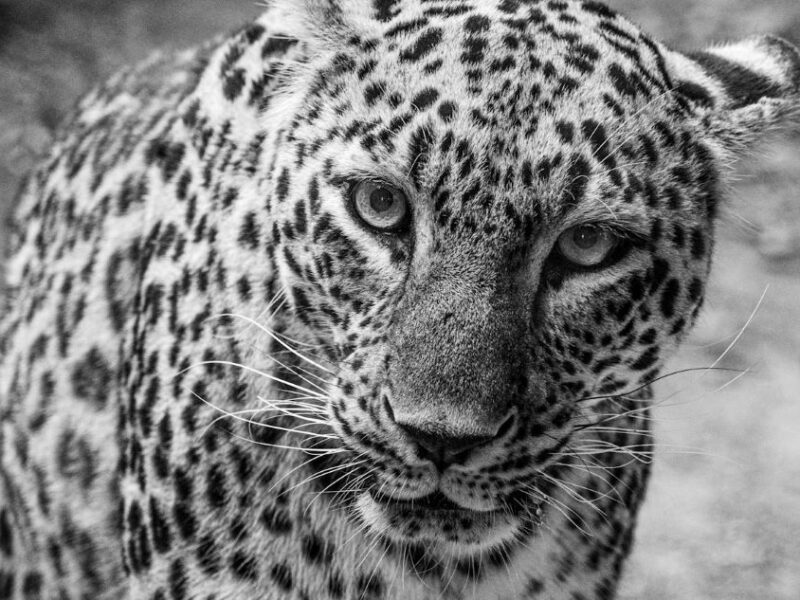
Sacred Animals in African Folklore
Leopards are often seen as sacred or holding a more prominent place than other animals in African folklore.
For example, in ancient Egyptian mythology, leopards symbolized strength and were associated with the god Osiris. Osiris was the god of fertility, life, the dead, and the afterlife, amongst others, and the association between the two reflects the power and authority that the leopard is seen as having.
Along the same vein, leopards were seen as symbols of courage, spiritual protection, as well as cunning in West African folklore, with enthralling tales and legends aligning with this train of thought.
Yet other African countries and cultures believed (and many still do) in the supernatural qualities that these African cats are said to have, with stories of shapeshifters, and magical encounters, to name but a few.
One tale that is not a tale but rather a fact, relates to the leopard’s intelligence and cunning nature. Many stories and legends about this have been woven and have been circulating for centuries. The intelligent and cunning nature that many dangerous game hunting enthusiasts have encountered has stood the leopard in good stead in the present day, as leopard hunts continue and they are tracked across the dark continent.
Rituals & Beliefs Relating to Leopards in Africa
If you know anything about the “dark continent,” it is that African cultures are entwined in age-old beliefs and rituals, with some superstition thrown in for good measure. Many of these rituals and ceremonies are still practiced across the African continent today.
- Leopards, and leopard hunting, form part of this cultural phenomenon and are included in tribes in many ways. For example, leopard skins are often worn by tribal chiefs, to show their wisdom and to set them aside from their tribesmen. While tribesmen might also wear skins or furs, only the chief was and is allowed to wear leopard skins. These skins were often used in ceremonial clothing, such as masks, capes, and headdresses and this continues in many tribes today.
- In some African cultures, men undergo initiation before being seen as a “man” within their society. These initiations can involve wearing leopard skins or even imitating leopard movements and behavior.
- Sangomas, shamans, and traditional healers often have leopard imagery in their abodes, as the body parts of the leopard, such as the bones, claws, and skins are said to have healing powers.
- Countless African cultures believe in a cultural connection between leopards and humans and incorporating them into their everyday lives, believing that it will help them be successful and wise.
In the image below, the current king of the Zulu nation, King Misuzulu Zulu, is inaugurated in May 2022. Note the use of the leopard skins to confirm and showcase his standing within the Zulu nation. (Photo Credit: Photo by RAJESH JANTILAL/AFP via Getty Images)
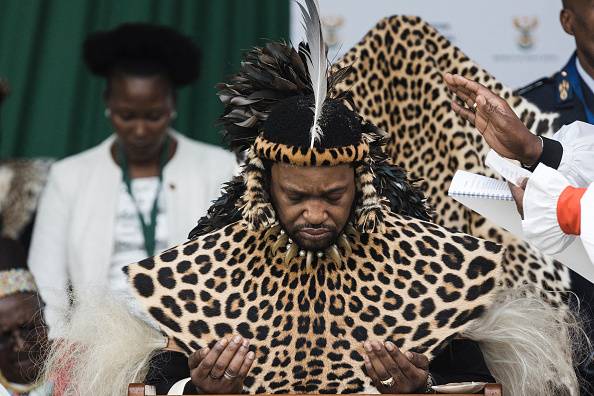
Threats to Africa’s Leopard Population
The International Union for the Conservation of Nature has listed the leopard as vulnerable. Although not endangered, leopards are facing a declining habitat due to population growth, as well as other challenges including human-wildlife conflict, lack of prey or less prey in their natural habitat, poaching, and climate changes.
- As population growth continues worldwide, so does the need for further agricultural land, and the infrastructural development of new towns and cities as urbanization grows and expands into known wildlife habitat regions.
- The challenge is that as humans encroach on leopard territories and with fewer prey, leopards start targeting and attacking local livestock as a food source, inciting human-wildlife conflict. This leads to violence against leopards to kill or remove them from the area.
- While the targeting of leopards and leopard hunting is legal in many closely monitored and regulated African hunts across the infamous dark continent, these majestic beasts are also often the prey of illegal hunters and poachers. They are targeted for their soft, silky, and beautiful coats as well as body parts including whiskers, tails, and claws that are used in clothing, jewelry, and other items.
- With less prey being available, this directly affects both the survival of the species as well as their reproduction.
- Deforestation due to urban spread, as well as the stark reality of climate change worldwide has a lasting effect on the leopard.
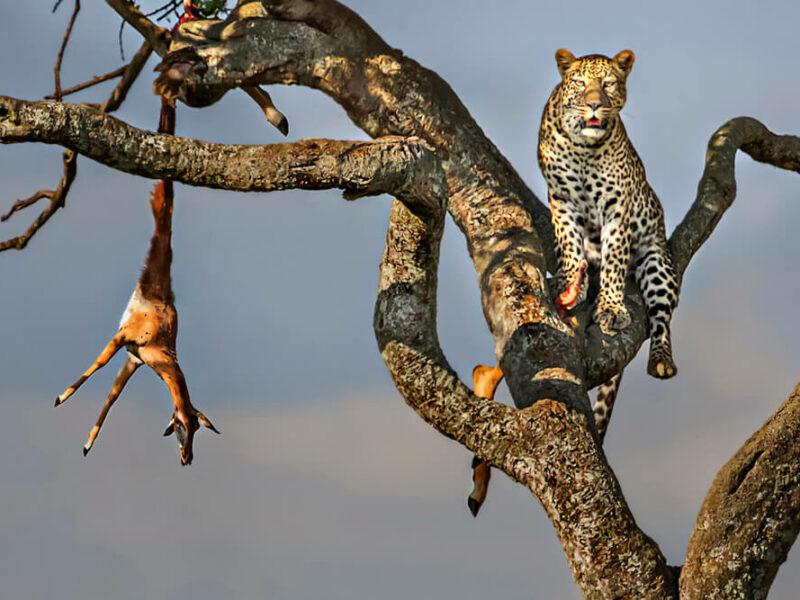
Leopards in Africa: The Way Forward
It has been seen, without a shadow of a doubt, that leopards are indeed mythical, elusive, and highly intelligent creatures that deserve their place in African tales and folklore. The African legends spin tales and stories of leopards, with many truths emerging along the way.
But where does that leave hunters? With leopard hunting being strictly regulated, I do believe that it has its place within the hunting world, where those hunters seeking to target this elusive, cunning, and intelligent cat, are aware of what an exceptional trophy they are hunting.
Ethical hunting believes in respecting the game that is hunted and doesn’t believe in allowing an animal to suffer unnecessarily. By correctly targeting the animal, a dangerous game hunting safari can indeed have its place within society, while still recognizing, appreciating, and acknowledging the significance of the leopard in African culture.
Frequently Asked Questions
Is Leopard hunting in Africa legal?
Yes, leopard hunting in Africa is legal. Leopard hunting safaris are undertaken in numerous countries including Mozambique, Namibia, Tanzania, Zambia, Zimbabwe, and Botswana.
Although leopard hunting in South Africa is legal, no tags have been issued for the past while.
Are Leopards endangered?
The International Union for the Conservation of Nature (IUCN) lists the status of the leopard as that of “vulnerable” due to both declining numbers of prey, as well as habitat.
Where in Africa can you enjoy Leopard hunting?
Leopard hunting safaris can be enjoyed across the African continent with popular destinations for these African hunts being Tanzania, Zambia, Zimbabwe, Namibia, Mozambique, Ethiopia, and Botswana.
Why are Leopards so popular to hunt?
Leopards form part of the Big 5 and Dangerous 7, making them a sought-after game hunting trophy. Hunters wishing to challenge themselves on a dangerous game hunting safari will target this elusive, cunning, and clever African cat.
The leopard’s beautiful pelt is another reason that it is targeted. The striking yellow-gold background with the dark rosettes that are outlined in black ensures an unusual and stunning trophy for any game hunter.
Are Leopards dangerous to hunt?
Yes, leopards are extremely dangerous to hunt. When enjoying a dangerous game hunting safari, leopards are rated as the most dangerous animal on earth when wounded, due to their resilience and that they will keep fighting until death.
They are also difficult to hunt, elusive, and unpredictable which adds to the danger element of the African hunt.
Is Leopard hunting popular in Africa?
Yes, as one of the Big 5 and Dangerous 7, leopards are sought-after trophies. The hunter is targeting one of the most dangerous, aggressive, and difficult African animals to hunt on a dangerous game hunting adventure,
And let’s be honest, there are a certain amount of bragging rights allowed once you have bagged this elusive trophy!
What hunting method is used to target Leopards on a game hunting safari?
Leopards are some of the most difficult and dangerous game hunting targets to hunt and hunting methods may differ according to the destination in which you find yourself.
There are a couple of methods used to hunt leopards:
Bait and Blind
This method does work, but leopards are quite shy and easily spooked, resulting in them leaving the area and not returning as a result. Activity at the bait is monitored via a trail cam and if there is a leopard in the area visiting the bait, a temporary blind is erected. Hunters then sit in wait for this dangerous African cat, hoping that luck is on their side and that they harvest this majestic African cat.
Stalking
For those looking for a real challenge, the stalking of leopards is also a possibility.
Hunting with Hounds
Some destinations, for example, Mozambique, allow the use of hounds in this African hunt. The hounds track and corner the leopard, allowing the hunter to take the shot.
How much does a Leopard hunting safari cost in Africa?
Leopard hunting is an exciting, exhilarating, and adrenaline-filled hunting adventure that will take between 10-21 days, depending on several factors, for example, has scouting or pre-baiting been completed before the hunt, the number of known animals in the area, the number of hunting days, accommodation, amenities available, the African destination in which you are planning your hunt, and so forth.
Leopard hunts start from around US$20,000 upwards, taking the above factors into account.
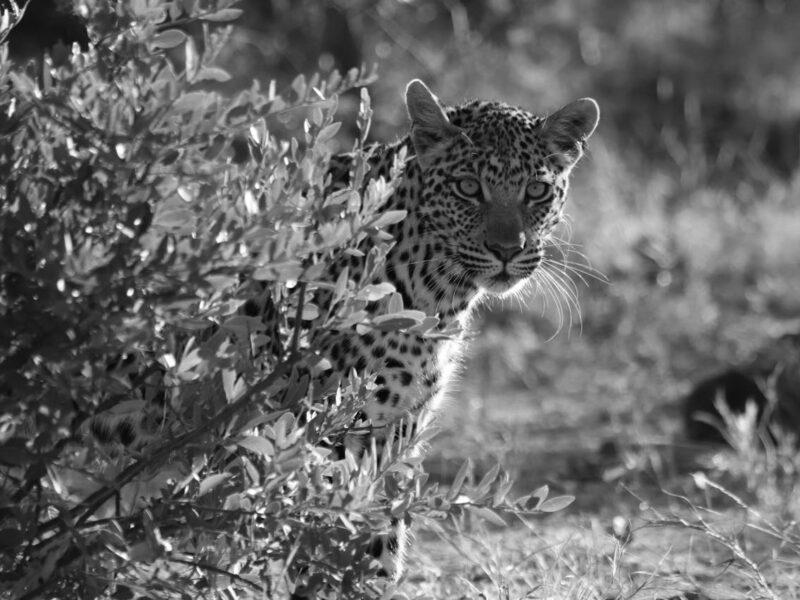
Dangerous Game Hunts: Targeting the Leopard
Leopard hunting is not for the faint-hearted and requires a knowledgeable and experienced hunter who is looking for a challenging game hunting safari. Your adversary is a nocturnal apex predator, and at the end of the day will defend itself right to the death; whether yours or theirs.
We’re happy to assist you in choosing the perfect leopard hunting safari! Check out some of the leopard hunts currently available.
Author: B. Hershensohnn
